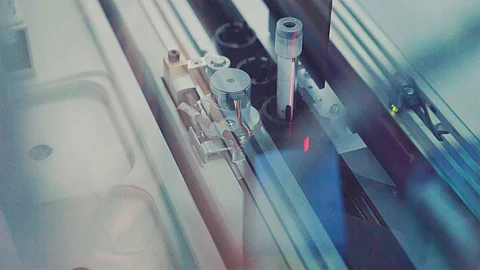The Role of Innovation in Shaping the Next Generation of Medical Devices
By Maria Garcia Ingier
Innovation is the driving force behind the evolution of medical devices, transforming healthcare and improving patient outcomes. By integrating cutting-edge technologies and creative design approaches, innovators can develop devices that not only meet regulatory standards but also push the boundaries of what is possible in medical care.
The medical device industry is at the forefront of technological advancement, with innovation playing a pivotal role in shaping the future of healthcare. As developers strive to create more effective and efficient devices, they must balance creativity with the need to adhere to stringent regulatory requirements. Collaborating with a medical device development company can provide the expertise needed to navigate these challenges, ensuring that new innovations are both groundbreaking and compliant.
Understanding the Impact of Innovation
Innovation in medical device design is about enhancing the quality of care and improving patient outcomes. By leveraging advanced technologies such as artificial intelligence, robotics, and nanotechnology, developers can create devices that offer unprecedented levels of precision and functionality. These innovations have the potential to revolutionize diagnostics, treatment, and patient monitoring, leading to more personalized and effective healthcare solutions.
The path to innovation is fraught with challenges. Developers must ensure that their designs meet rigorous safety and efficacy standards set by regulatory bodies like the FDA. This requires a deep understanding of the regulatory landscape and a commitment to maintaining compliance throughout the development process. By staying informed about the latest guidelines and incorporating them into the design phase, innovators can avoid costly setbacks and bring their products to market more efficiently.
The Synergy of Innovation and Compliance
While innovation is essential for advancing medical technology, it must be balanced with compliance to ensure patient safety. Specialized partnerships with medical device development companies can facilitate this balance by providing the necessary expertise and resources. These companies have a deep understanding of regulatory requirements and can guide innovators through the complex approval process, helping to identify potential issues early and streamline compliance efforts.
This collaboration not only ensures that new devices meet all necessary standards but also fosters an environment where innovation can thrive. By leveraging the knowledge and experience of regulatory experts, developers can focus on refining their designs and exploring new possibilities without compromising on safety or efficacy. This approach leads to the creation of innovative products that are both compliant and competitive in the market.
Strategic Innovation Planning
Effective innovation requires strategic planning to anticipate and address potential challenges. By implementing a comprehensive development strategy, innovators can identify risks early and develop solutions that align with regulatory expectations. This proactive approach minimizes the likelihood of setbacks and ensures a smoother path from concept to commercialization.
Engaging with experts during the planning phase allows for thorough risk assessments and the development of robust compliance strategies. Continuous monitoring and adaptation to regulatory changes are also crucial, ensuring that devices remain compliant throughout their lifecycle. This strategic foresight not only protects investments but also enhances the credibility and reliability of the products in the healthcare industry.
Enhancing Innovation Through Collaboration
Collaboration with experts in medical device development maximizes the potential of innovation by integrating specialized knowledge and methodologies into the design process. This partnership enhances efficiency and ensures that all regulatory requirements are met, allowing innovators to focus on pushing the boundaries of medical technology.
By fostering a collaborative environment, developers can benefit from shared insights and continuous improvement, leading to the creation of groundbreaking devices that meet the highest standards of quality and safety. This synergy between innovation and compliance ultimately results in successful product implementation and market entry, driving the next generation of medical devices forward.
MBTpg


